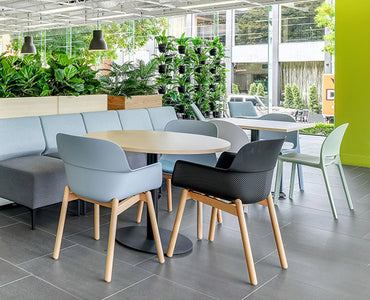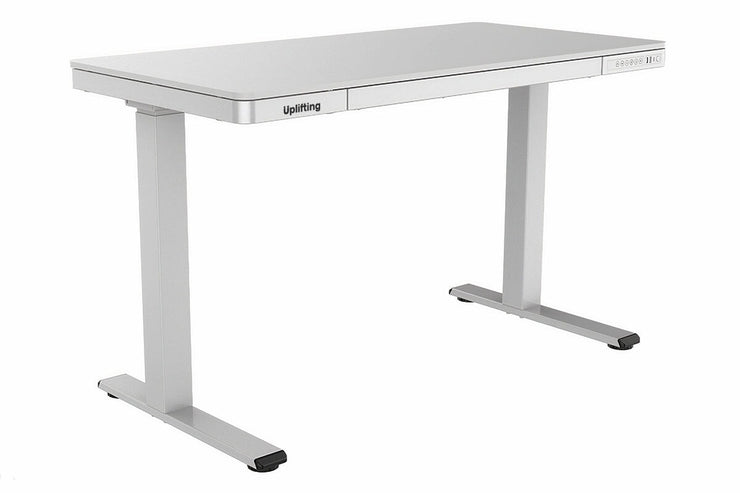- Office Furniture
- Office Desks
- Standing Desks
-
Uplifting Tango Electric Sit Stand Desk
Regular price $595Regular priceUnit price / per$595.00Sale price Now $595 -
Flexi Premium Height Adjustable Corner Workstation [1600L x...
Regular price $1,388Regular priceUnit price / per -
Flexi Premium Height Adjustable Corner Workstation [1400L x...
Regular price $1,373Regular priceUnit price / per -
Uplifting Tango Electric Sit Stand Desk
Regular price $595Regular priceUnit price / per$595.00Sale price Now $595 -
Flexi Premium Height Adjustable Corner Workstation [1600L x...
Regular price $1,388Regular priceUnit price / per -
Flexi Premium Height Adjustable Corner Workstation [1400L x...
Regular price $1,373Regular priceUnit price / per -
Uplifting Tango Electric Sit Stand Desk
Regular price $595Regular priceUnit price / per$595.00Sale price Now $595 -
Flexi Premium Height Adjustable Corner Workstation [1600L x...
Regular price $1,388Regular priceUnit price / per -
Flexi Premium Height Adjustable Corner Workstation [1400L x...
Regular price $1,373Regular priceUnit price / per -
Uplifting Tango Electric Sit Stand Desk
Regular price $595Regular priceUnit price / per$595.00Sale price Now $595 -
Flexi Premium Height Adjustable Corner Workstation [1600L x...
Regular price $1,388Regular priceUnit price / per -
Flexi Premium Height Adjustable Corner Workstation [1400L x...
Regular price $1,373Regular priceUnit price / per -
Uplifting Tango Electric Sit Stand Desk
Regular price $595Regular priceUnit price / per$595.00Sale price Now $595 -
Flexi Premium Height Adjustable Corner Workstation [1600L x...
Regular price $1,388Regular priceUnit price / per -
Flexi Premium Height Adjustable Corner Workstation [1400L x...
Regular price $1,373Regular priceUnit price / per -
Uplifting Tango Electric Sit Stand Desk
Regular price $595Regular priceUnit price / per$595.00Sale price Now $595 -
Flexi Premium Height Adjustable Corner Workstation [1600L x...
Regular price $1,388Regular priceUnit price / per -
Flexi Premium Height Adjustable Corner Workstation [1400L x...
Regular price $1,373Regular priceUnit price / per -
Just Right Height Adjustable 2 Person H-Bench Workstation...
Regular price $1,317Regular priceUnit price / per -
Flexi Premium Height Adjustable Single Workstation [1200L x...
Regular price $916Regular priceUnit price / per -
Just Right Height Adjustable Corner (RHS) Workstation -...
Regular price $1,001Regular priceUnit price / per -
Just Right Height Adjustable Corner (RHS) Workstation -...
Regular price $986Regular priceUnit price / per -
Flexi Premium Height Adjustable Corner Workstation [1400L x...
Regular price $1,373Regular priceUnit price / per -
Just Right Height Adjustable 2 Person H-Bench Workstation...
Regular price $1,317Regular priceUnit price / per -
Just Right Height Adjustable 3 Person 120 Degree...
Regular price $2,376Regular priceUnit price / per -
Flexi Premium Height Adjustable Corner Workstation [1600L x...
Regular price $1,388Regular priceUnit price / per -
Uplifting Tango Electric Sit Stand Desk
Regular price $595Regular priceUnit price / per$595.00Sale price Now $595
More about our
Standing Desks
Get your fitout booked today

Completed in under 10 days.

With dedicated project management from start to finish.

Full-service. Layout design,
delivery, and installation.

And showrooms nationwide for your convenience.
Our Client's Experience
Read case study
I had a vision of how I wanted it to look, I sent it through to them and they adjusted it, took all the measurements, it was a really easy process.
Marcus CarboneSolicitor Director & Founder at MTK LawyersPaula Ryan
@Paula Ryan - 1month(s) ago
I wanted to take a moment to share my recent experience with our sales, service and install, and I must say, it was...
Jon Ball
@Jon Ball - 1month(s) ago
I ordered the Rivoli Bar and McDuck drafting chairs for my office, really impressed with the fast delivery and excellent quality of the...
Peta Sullivan
@Peta Sullivan - 2month(s) ago
I cant recommend JasonL highly enough. From the very first enquiry, point to point up until installation was first class and very thorough....
jay cho
@jay cho - 3month(s) ago
Great service and communication from the company. I bought a drawer and it was slightly damaged upon shipping. The staff organised a replacement...
See all of this at one of
our showrooms near you.
-
All locations Showrooms
-
Sydney Showroom
-
Melbourne Showroom
-
Brisbane Showroom
-
Western Sydney Showroom
-
Adelaide Showroom
-
Perth Showroom
-
East Coast Distribution Centre
- Sydney City Showroom Shop 3, 29-31 O’Riordan Street, Alexandria, NSW 2015 Call: 1300 350 618
- Brisbane Showroom 728 Ann Street, Fortitude Valley, QLD 4006 Call: 1300 350 629
- Western Sydney Showroom 2A/149 McCredie Road Smithfield, NSW 2164 Call: 1300 350 624
- Adelaide Showroom 176 Grote Street, Adelaide, SA 5000 Call:1300 395 731
- Melbourne Showroom 100 Park Street, South Melbourne, VIC 3205 Call: 1300 350 627
- Perth Showroom 11 King Edward Road, Osborne Park, WA 6017 Call: 1300 249 035

The incredible team
that will assist you in
Adelaide
Meet Alex L'Efevre, our Showroom Manager at our Adelaide branch. He is here to assist you with all your Adelaide office furniture needs.

Ondrej Hyzdal
National Sales ManagerI provide expert guidance and assistance to businesses in selecting, planning, and optimizing their office furniture and layout to create functional, comfortable, and aesthetically pleasing workspaces.

["595","1388","2376","1317","1373","3114","986","1001","916","1317","986","1001"]


![Flexi Premium Height Adjustable Corner Workstation [1600L x 1450W] Jasonl White white](http://www.jasonl.com.au/cdn/shop/products/flexi-premium-height-adjustable-corner-workstation-1600l-x-1450w-670541.jpg?v=1638495503&width=370)

![Flexi Premium Height Adjustable Corner Workstation [1400L x 1450W] Jasonl Black salvage oak](http://www.jasonl.com.au/cdn/shop/products/flexi-premium-height-adjustable-corner-workstation-1400l-x-1450w-334794.jpg?v=1655817142&width=370)

![Just Right Height Adjustable 2 Person H-Bench Workstation - Black Frame [1200L x 700W] Jasonl white light grey echo panel (820H x 1200W) none](http://www.jasonl.com.au/cdn/shop/products/just-right-height-adjustable-2-person-h-bench-workstation-black-frame-1200l-x-700w-618434.jpg?v=1680800711&width=370)

![Flexi Premium Height Adjustable Single Workstation [1200L x 700W] Jasonl white leg white none](http://www.jasonl.com.au/cdn/shop/files/flexi-premium-height-adjustable-single-workstation-1200l-x-700w-561156.jpg?v=1742988765&width=370)

![Just Right Height Adjustable Corner (RHS) Workstation - White Frame [1600L x 1450W] Jasonl white](http://www.jasonl.com.au/cdn/shop/products/just-right-height-adjustable-corner-workstation-white-frame-1600l-x-1450w-722024.jpg?v=1655219065&width=370)

![Just Right Height Adjustable Corner (RHS) Workstation - White Frame [1400L x 1450W] Jasonl white](http://www.jasonl.com.au/cdn/shop/products/just-right-height-adjustable-corner-workstation-white-frame-1400l-x-1450w-306274.jpg?v=1655219632&width=370)

![Just Right Height Adjustable 2 Person H-Bench Workstation - White Frame [1200L x 700W] Jasonl white blue echo panel (820H x 1200W) none](http://www.jasonl.com.au/cdn/shop/products/just-right-height-adjustable-2-person-h-bench-workstation-white-frame-1200l-x-700w-142062.jpg?v=1680800730&width=370)




